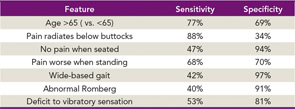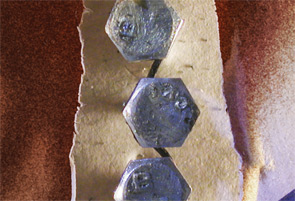
The problem of coexisting diagnoses requires some creativity on the part of the clinician. It is often helpful to use soft tissue and joint injections to isolate the source of symptoms. For example, trochanteric or hip injections (often done under fluoroscopy) are useful in ruling out the greater trochanter or hip as the primary source of symptoms. It is important not to mistake spinal stenosis for vascular claudication, and it is occasionally necessary to obtain ankle brachial index evaluations to identify vascular compromise. Generally, however, these entities can be distinguished by history, as the postural element of lumbar stenosis (such as exacerbation with lumbar extension) is typically not observed in patients with vascular claudication.

It is useful to work carefully with a surgeon who is thoughtful, conservative, and able to simplify the complicated details and concepts of spinal arthrodesis when explaining the options to patients…There is no evidence that surgery needs to be performed promptly in patients with spinal stenosis. Thus, patients can—and should—take their time in making these decisions.
Challenges in Treating Spinal Stenosis
- Exercise is frequently prescribed for lumbar spine problems, but is difficult for patients with spinal stenosis. It can be very challenging for patients with stenosis to run or walk even short distances, or to stay standing for any period of time. The problem is that lumbar extension exacerbates compression and therefore exacerbates symptoms.
- Medications used to treat pain are not tolerated well in the elderly, who comprise the majority of spinal stenosis patients. Nonsteroidal antiinflammatory drugs (NSAIDs) are often useful in reducing pain in patients with spinal stenosis and other spine problems. However, patients over the age of 60 often have gastrointestinal intolerance, and many take anticoagulants or have risk factors for cardiac disease. Because nonselective NSAIDs increase bleeding risk and both nonelective and particularly selective NSAIDs pose a risk of cardiac events, these problems complicate the choice of medications. Celecoxib can overcome the problem of bleeding risk but poses an additional risk of cardiac disease, which is frequently concerning to patients and their physicians. Narcotic medications are another option, but they are also often tolerated poorly in the elderly, who are at risk of falls and other adverse events. Acetaminophen is generally tolerated well, though it frequently provides inadequate pain relief and the dose must be watched carefully to avoid the risk of liver disease.
- Older patients are often risk averse and less willing to entertain invasive procedures than their younger counterparts. Lumbar epidural steroid injections are short lived and lack high-quality trials demonstrating their efficacy. The observational literature suggests these injections have a role in relieving leg pain, though their effectiveness in relieving back pain is less clear. The principal risks associated with these procedures—infection and nerve damage—are less than 1%. Many patients have developed a fear of spinal injections from friends and family who themselves have undergone similar injections and found them painful or experienced complications.
Lumbar laminectomy is effective in the management of lumbar stenosis. As with injections, surgery is especially helpful if the patient has a predominance of leg pain. A particularly challenging feature of the discussion of surgery for spinal stenosis is the role of lumbar arthrodesis, or fusion, which has a higher risk of complications than simple decompression. The indications for lumbar fusion are not well defined and require further study, though the literature suggests that fusion benefits patients undergoing decompression who have a concomitant spondylolisthesis or scoliosis. There are several approaches to lumbar fusion, including autogenous arthrodesis (often using bone from the patient’s iliac crest) and supplementation of the autogenous bony fusion with instrumentation (e.g., pedicle screws, plates, fusion cages, and artificial discs). However, the literature on these types of implants is inadequate and controversial.